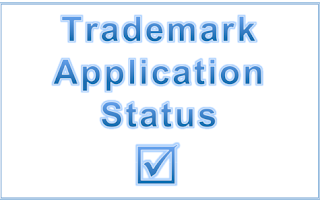STATUS
UNDER THE PROCESS OF REGISTRATION OF TRADEMARK
A trademark application goes
through various stages of scrutiny before it is registered. The various stages
are briefly explained below. After filing of trademark any objections or
notifications will be shown online.
Status
“New Application”
The trademark application has
been entered into the trademark application data base.
Status
“Send to Vienna codification”
When the
trademark comprises figurative elements/logo and is being assigned a Vienna Code
by the Indian Trade Mark Registry. As soon as a new trade mark application is
filed, a Vienna Code is assigned if the trade mark comprises figurative
elements/logo. The Vienna code is assigned based on the nature of the
figurative element/logo. Such figurative elements/logos are codified according
to the Vienna Agreement as per the link below:
http://www.wipo.int/classifications/nivilo/vienna/index.htm#
Vienna codification is done by the Registry so that trademark searches can be
conducted for artworks/logos. Once the Vienna codification is done, there is
still a long way in the trade mark registration process such as formalities
check, examination, publication and then registration.
Status
“Formalities Check Pass”
The
trade mark status in the Indian Trade Mark Registry website shows as “Formalities Check Pass” when the preliminary documentary requirements are
met. The Trade Mark Registry usually checks if the basic requirements are met
such as: whether the POA has been uploaded (when filed through an agent) and
whether appropriate translation/transliteration (if applicable) has been filed.
Status “Formalities Check Fail”
When such
basic requirements are not met, the status could be reflected as
"Formalities Check Fail".
Status
“Marked for Exam”
The trademark application has been taken up by the
examiner to check for acceptability.
When
the Registrar/Examiner has raised one or more objections in the Examination
report under Sections 9 and 11 of the Trade Marks Act.
Section
9 objections are made when the Registrar/Examiner considers the trade mark to
be descriptive of goods/generic/laudatory/indicating quality or nature of
goods.
Section
11 objections are made by the Registrar/Examiner when there is an
identical/similar trade mark in respect of identical/similar goods/services
already on record in the Trade Mark Registry. In such cases, the Registrar/Examiner
issues a computer generated Search Report with the list of conflicting
marks.
Status
“Abandoned”
The
trade mark status in the Indian Trade Mark Registry website shows as “Abandoned”
when the applicant failed to respond within the stipulated time period
prescribed under the Act.
The trade mark
application could be “Abandoned” due to lack of prosecution by the Applicant
such as when:
- No response has been filed to a deficiency letter within the stipulated period of one month from receipt of letter
- No response has been filed to an examination report within the stipulated period of one month from receipt of examination report
- Show-cause hearing has not been attended when the hearing was posted
- Counter statement has not been filed with 2 months from receipt of notice of opposition
Status
“Exam report issued”
The trademark
application will probably published in trademark journal or requires slight modification to be published.
Status
“Refused”
The trademark registration has been refused
based on the applicant’s response for the adverse report or objection.
Status
“Advertised before acceptance”
When
the trade mark application has been advertised before acceptance in the Trade
Mark Journal by the Registrar (factors taken into consideration by the
registrar for advertising the application in the trade mark journal)
Status
“Accepted & Advertised
When
the trade mark application has been accepted and advertised in the Trade Mark
Journal. This is one of the final stages in the trade mark registration
process.
The
statute allows for any third parties to oppose the trade mark application
within 4 months from the date of advertisement in the Trade Marks Journal.
Where an application is advertised before Acceptance and there is no opposition
lodged during the opposition period, there is a procedural requirement for the
application to be accepted by an Accepting Officer before the registration
certificate is issued. Once accepted by the Accepting Officer, the trade mark
status changes to “Accepted and Advertised” and then “Registered”. The
registration certificate is usually issued in approximately 3 months upon
expiry of opposition period.
Status “opposed”
The trademark
application has been opposed by third party. It must resolve the oppositions’
concern through the registrar.
Status “Withdrawn”
The trademark
application has been withdrawn by applicant prior to registration.
Status “Removed”
The trademark
application has been removed by the trademark registry. The mark is no longer
trademarked.





